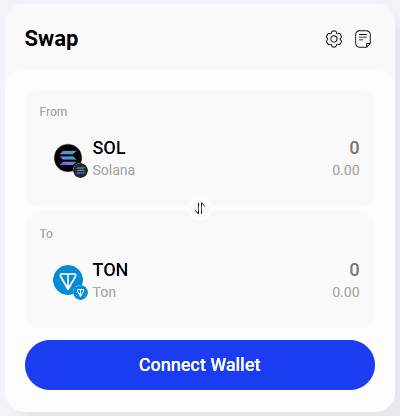Summary
Gamers, NFT creators, and DeFi users are increasingly migrating to Avalanche to tap into its fast-growing ecosystem, ne key reason why many are now looking to bridge to Avalanche. From immersive Web3 games to new staking platforms, Avalanche continues to evolve as a performance-driven blockchain for diverse on-chain activity.
In 2025, Avalanche has seen notable traction with fresh DEX launches, a surge in memecoins, and more integrations with non-EVM chains. As new users onboard or existing users expand their reach, bridging assets to Avalanche is often the first step.
Prerequisites
Before initiating your transfer, make sure these are sorted:
- Wallet Setup: You’ll need a Web3 wallet like MetaMask or Core Wallet. Core Wallet is Avalanche-native and useful for bridging Bitcoin directly.
- AVAX for Gas Fees: You need AVAX in your wallet to perform any on-chain actions once tokens arrive. You can acquire AVAX for gas fees on BYDFi.
- Add Avalanche to Wallet: If you’re using MetaMask, add the Avalanche C-Chain manually through custom RPC settings.
Step-by-Step Guide: Bridge to Avalanche via Core Bridge
Core Bridge is the official bridging solution created by Ava Labs. It supports transfers between Avalanche, Ethereum, and Bitcoin, and handles assets beyond just stablecoins.
Actionable Tips
- For lower gas costs on Avalanche, prioritize bridging from Layer 2 networks like Arbitrum or Optimism, fees are often cheaper than Ethereum mainnet.
- If your transaction remains unconfirmed for over 15 minutes, check your wallet for stuck approvals. Re-attempt the bridge using a slightly higher gas limit if needed.
Alternative Platforms
If you ever need another way to bridge to Avalanche, these two options support a wider range of tokens or offer access from less common networks:
Layerswap
Layerswap offers a user-friendly bridge experience, especially if you’re bridging from a non-EVM chain like Solana or from a centralized exchange. It supports 50+ networks and handles wallet switching automatically.
Rango Exchange
Rango is a powerful bridge aggregator. It connects to over 100 DEXs and bridges to help find the best route to Avalanche. It’s useful when your source network isn’t supported by Core Bridge, though aggregator fees apply.
Security Considerations:
- When bridging to Avalanche, always ensure the destination network is set to Avalanche C-Chain, using X-Chain or P-Chain by mistake may cause transaction failures or loss of funds.
- Double-check the token type and amount before confirming the transfer, and avoid manually typing wallet addresses.
- Incase you’re bridging from Bitcoin Expect longer confirmation times and make sure you’re using a supported native wallet.
- Verify that you have enough AVAX in your wallet to cover post-bridge gas fees. Stick to official or reputable bridges like Core Bridge, Rango, or Layerswap, and always double-check URLs to avoid phishing traps.
Bottom Line
If you’re looking to enter Avalanche’s DeFi, NFT, or gaming scene, bridging is your first real step in. Once you bridge to Avalanche, you’ll get fast, low-fee interactions across a growing number of dApps. Just remember: having AVAX ready and choosing the right bridge platform will set you up for success.
FAQs
1. Do I need AVAX before I bridge?
Yes. AVAX is required for all on-chain transactions on Avalanche. Make sure to buy and send it to your wallet’s C-Chain address first.
2. Can I use Core Bridge to move NFTs?
In some cases, yes. Core Bridge supports NFTs when transferring from compatible chains. Always verify before sending to avoid unsupported transfers.
3. What if I accidentally bridge to X-Chain or P-Chain?
You may lose dApp functionality or encounter wallet errors. Always bridge to Avalanche C-Chain, which supports Web3 activity.





